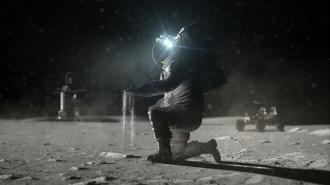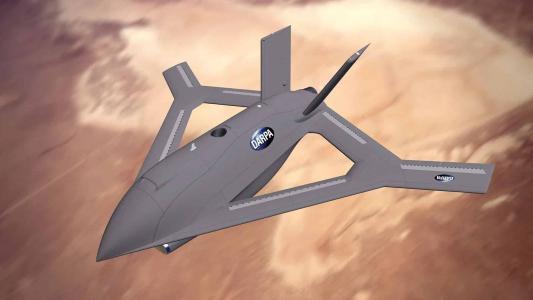A team of Harvard astrophysicists has put a new twist on an old geoengineering proposal with research showing that we could cool the Earth with a thin sun shield made out of dust launched from the moon.
The researchers admit that their proposal is out there, and the cost would be immense — but they believe it could work, temporarily, if we could figure out how to mine and launch enough dust from the moon.
“It is amazing to contemplate how moon dust — which took over four billion years to generate — might help slow the rise in Earth’s temperature, a problem that took us less than 300 years to produce,” said co-author Scott Kenyon from the Harvard–Smithsonian Center for Astrophysics.
Solar geoengineering could potentially buy us more time to get our emissions under control.
The challenge: When greenhouse gasses reach the atmosphere, they form a sort of blanket that traps the heat reflecting off Earth’s surface, causing temperatures to rise. To combat this, we need to reduce our emissions (and maybe even pull out CO2 already in the air).
Unless we drastically speed up those reduction efforts, though, we’re likely to see the climate situation deteriorate — temperatures will continue to rise, new health threats will emerge, and extreme weather will become more common and more severe.
The idea: Solar geoengineering is a radical idea that could potentially buy us more time to get our emissions under control.
While specifics vary, the most common idea is that we could reduce the amount of solar radiation that reaches Earth’s surface — this could mean making clouds more reflective, or injecting reflective particles into the stratosphere.
Blocking just 2% of solar radiation might be enough.
Another option is to create a physical barrier in space between Earth and the sun.
If this sun shield could block just 2% of the solar radiation that currently reaches the planet’s surface, it might be enough to revert our climate back to pre-Industrial Revolution conditions (though we would want to scale up slowly and possibly not even all the way to 2%).
The most obvious location for this shield is the L1 Lagrange point — a point between the sun and Earth where the gravity of the two objects creates a kind of equilibrium, which causes smaller objects placed there to maintain their position.
Because the shield would be well outside Earth’s atmosphere, it would theoretically be less risky than solar geoengineering efforts closer to home, which might create unintended impacts on weather patterns, damage the ozone layer, or cause other atmospheric problems.
“Even the slightest deviation in the sun shield’s orbit can cause it to rapidly drift.”
Sameer Khan
What’s new? Proposals for how to build a sun shield have ranged from tiny spacecraft to rafts of bubbles, but researchers from the University of Utah and the Harvard–Smithsonian Center for Astrophysics are throwing moon dust into the mix.
Based on their simulations, dust particles sent to L1 could block enough solar radiation to work as a sun shield, but only temporarily.
“It was rather difficult to get the shield to stay at L1 long enough to cast a meaningful shadow,” said study co-author Sameer Khan.
“This shouldn’t come as a surprise, though, since L1 is an unstable equilibrium point,” he continued. “Even the slightest deviation in the sun shield’s orbit can cause it to rapidly drift out of place, so our simulations had to be extremely precise.”
“It takes much less energy to launch these grains from the moon’s surface.”
Ben Bromley
Because the cost of constantly launching dust from Earth would be astronomical, the team looked into the possibility of sourcing the dust from the moon, where the force of gravity is much weaker.
“Since it takes much less energy to launch these grains from the moon’s surface, as compared with an Earth launch, the ‘moonshot’ idea really stood out for us,” lead author Ben Bromley told the Guardian.
The team concluded that the properties of moon dust would work for a sun shield — but millions of tons would need to be mined and launched every year, and we currently have no way to mine that much material on the moon or launch it.
“Our strategy may just be a moonshot, but we should explore all possibilities.”
Ben Bromley
The big picture: The researchers concede that many hurdles stand between us and a sun shield made of moon dust, and that a huge amount of research and development would be needed before a plan like theirs could be put into action.
“We aren’t experts in climate change, or the rocket science needed to move mass from one place to the other,” said Bromley. “We’re just exploring different kinds of dust on a variety of orbits to see how effective this approach might be.”
They also emphasize that the world’s focus should remain on reducing emissions as quickly as possible — but note that we should also prepare for a future in which we need to take more drastic action.
“Our strategy may just be a moonshot, but we should explore all possibilities, in case we need more time to do the work here at home,” Bromley told the Guardian.
We’d love to hear from you! If you have a comment about this article or if you have a tip for a future Freethink story, please email us at [email protected].






